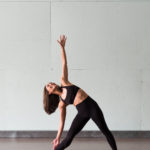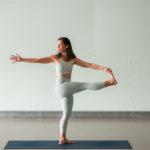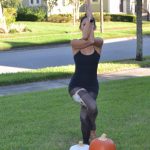Photos by Kelly Rodriguez
We are three months into 2022. A quarter of the year is about to fly by, and in my opinion, the best month in Florida has arrived. Extended triangle pose and revolved triangle pose for the third month, March 2022!
Triangles are the strongest shapes geometrically. In yoga, utthita trikonasana, or extended triangle pose, is a quintessential yoga posture and a personal favorite of mine to both teach and practice. The posture itself provides strengthening in the legs and back body as well as opening up the chest and heart. In addition, it is accessible to most bodies practicing yoga but is often mis-practiced.
When I first began practicing yoga, I assumed the “goal” of extended triangle pose was to touch the floor. Having relatively flexible hamstrings, I quickly pushed my hips back and my chest forward, and voila, I achieved an extended triangle pose! Boy, was I wrong! First, there is no “goal.” Yoga is called a practice for a reason. Second, the posture I was practicing was caving in and not providing the lengthening that triangle pose calls for.
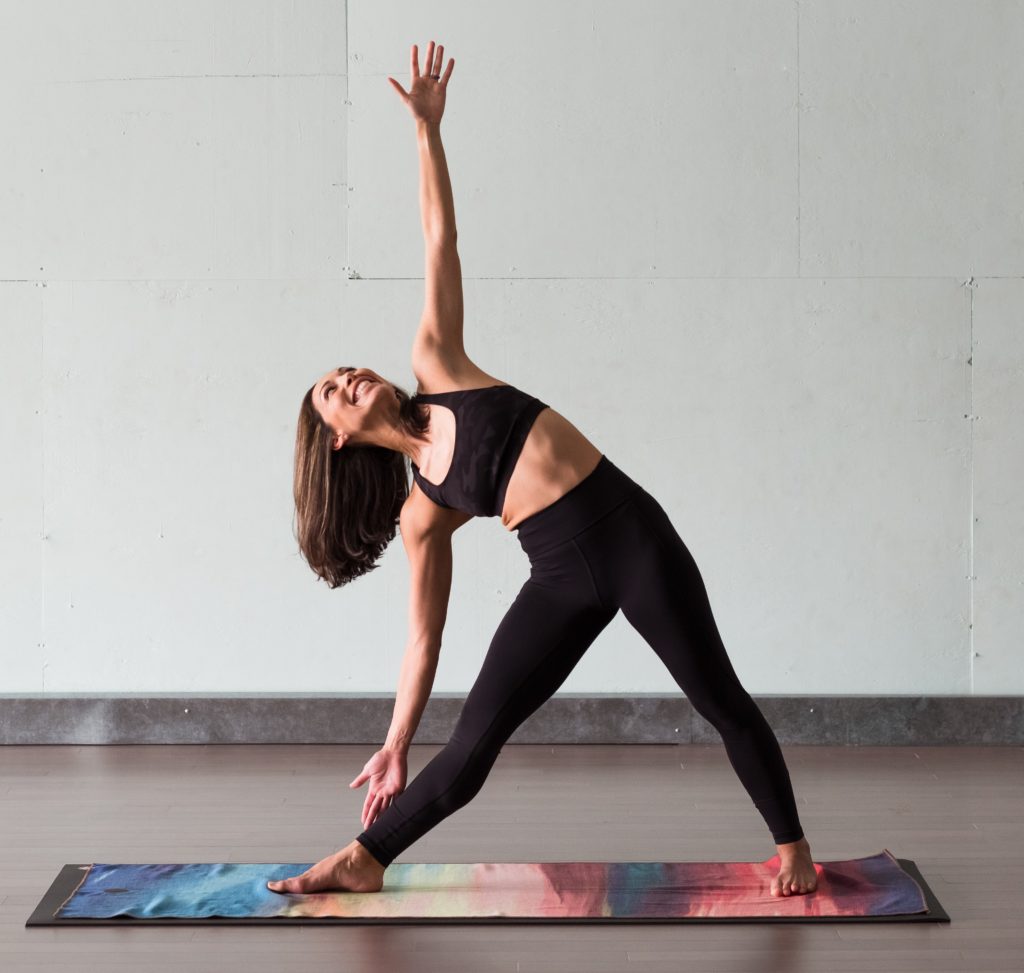
Triangle pose is made up of several triangles within the body. The legs and the floor create the most prominent triangle. Energy being pushed into the earth by the feet but also lifting up the inner thighs from the ground creates strength in the legs. The arm moving toward the ground whether on the leg or toe, the forward leg, and the side body create another triangle. This one creates strength in the lower side of the body. The top arm creates an angle, opening and lengthening the top side of the body. When practiced correctly, the utthita trikonasana pose should look and feel open and expansive.
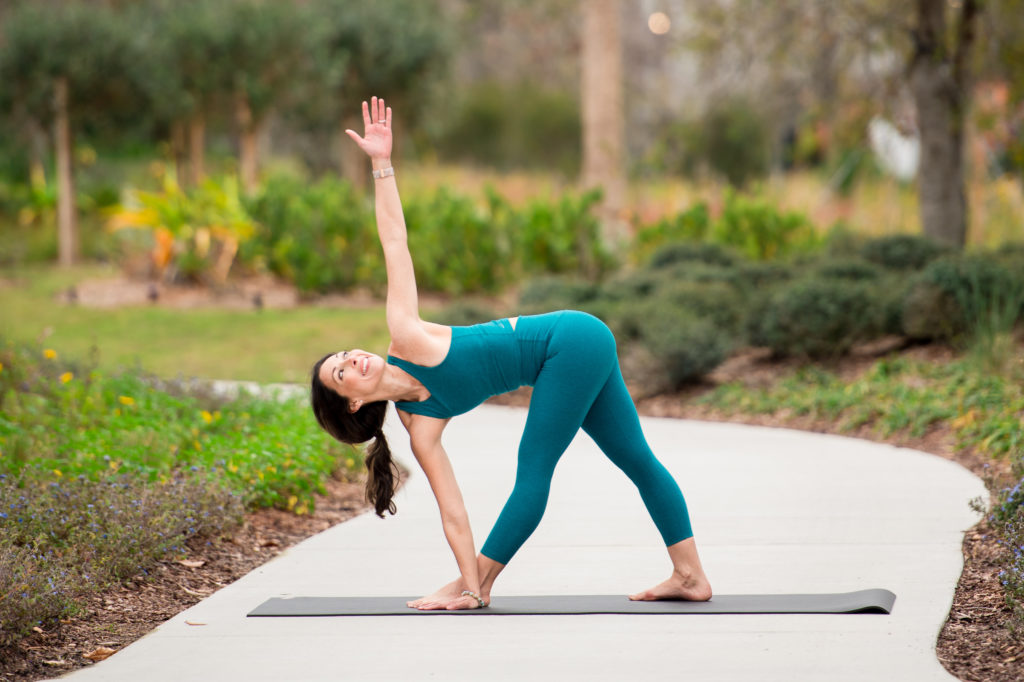
Revolved triangle pose is similar but different. It is the counterpose to the extended triangle pose. This is one of my least favorite postures, which usually means it’s a posture my body should practice more often. While utthita trikonasana works the inner thighs, parivrtta trikonasana works the outer legs, hamstrings and hips with more vigor. In Yoga Anatomy by Leslie Kaminoff and Amy Matthews, they explain that the rotation of the spine requires the muscles on the outsides of the hip joints to be very long. The base is narrow; thus, the same muscles must actively modulate to keep from falling from side to side. When hip mobility is unavailable, we often overcompensate by flexing the spine and compromising the breath. I personally use a block for the revolved triangle pose as it allows me to breathe and feel balanced in the posture.
Utthita trikonasana
- Spread the feet 3-4 feet apart.
- Open the arms apart, palms down, and parallel to the floor.
- Turn the right foot 90 degrees toward the front of the mat.
- Turn the left foot slightly in toward the front of the mat, keeping the leg straight and active.
- Inhale and reach the right arm toward the front of the mat bringing the right palm down near the shin, right ankle, or landing on the floor on the outside of the right foot.
- Lift the left arm up, keeping the shoulders in line with the right wrist. Keep the legs strong and do not hinge at the hips.
- Allow the gaze to be at the left hand.
- Hold the posture for 5-10 even breaths.
- Rise on an inhale and switch sides.
Parivrtta trikonasana
- Spread the legs 3-4 feet apart.
- Open the arms, palms down, and parallel to the floor.
- Turn the right foot 90 degrees toward the right of the mat while turning the left foot 60 degrees toward the right side of the mat.
- As you exhale, rotate the trunk and left leg, placing the left hand close to the right foot, optimally on the outside of the right foot.
- Stretch the right arm up, bringing it in line with the left arm. Gaze at the right thumb.
- Keep the legs strong and stretch both the shoulders and shoulder blades.
- Stay in the posture for 5-10 full breaths.
- Rise on the inhale.
Namaste.
